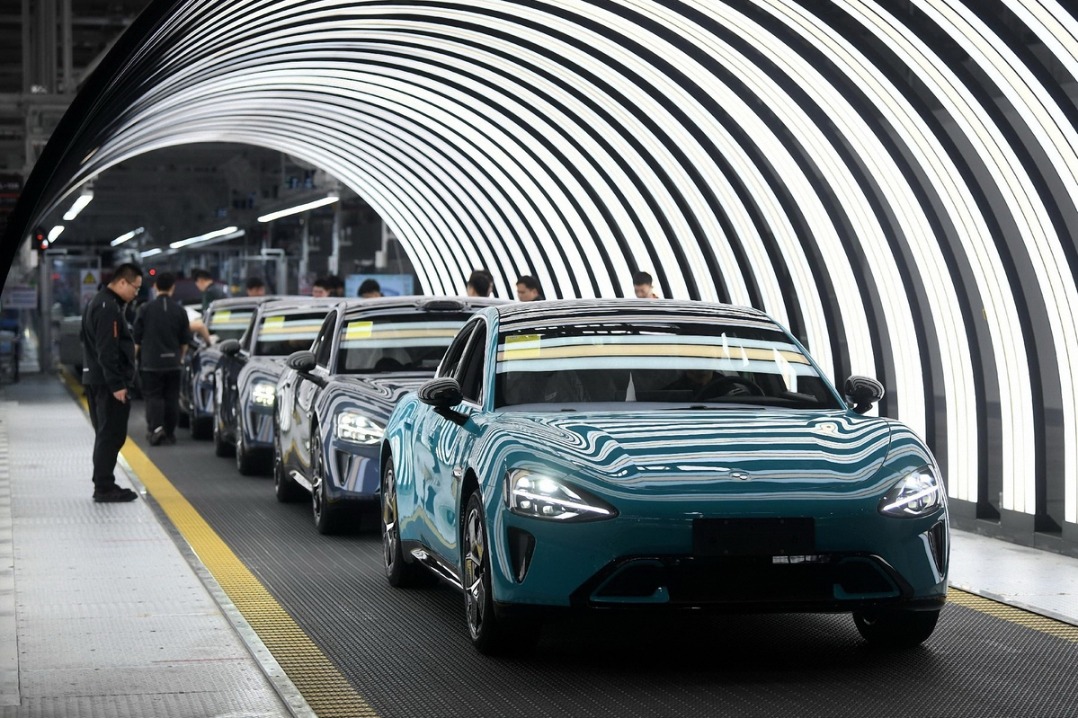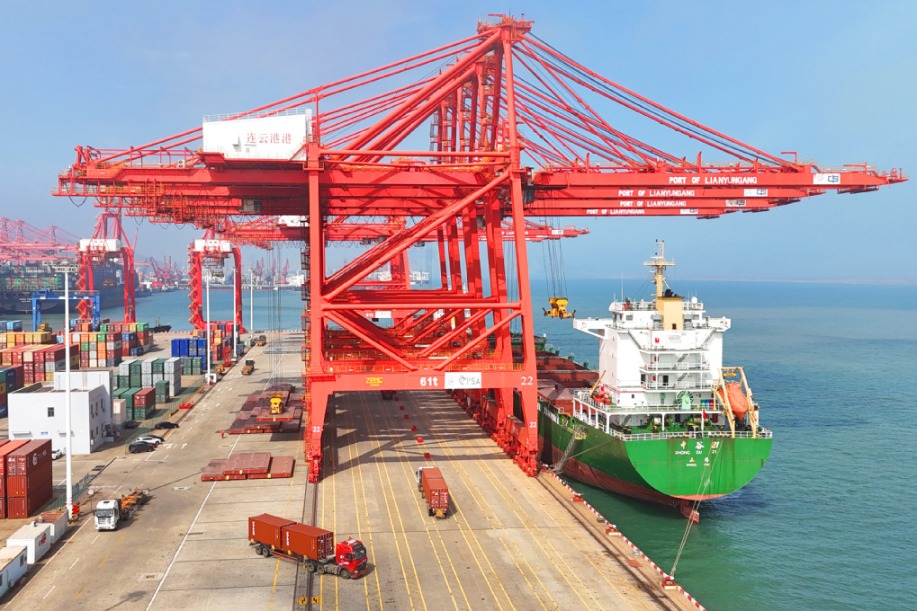New stage, new goals
Understanding the benefits of China's 14th Five-Year Plan and 2035 Vision
By CAI FANG | China Daily Global | Updated: 2020-11-30 08:04

The Fifth Plenary Session of the 19th Central Committee of the Communist Party of China held in October approved the Central Committee's proposals for formulating the 14th Five-Year Plan (2021-25) for National Economic and Social Development and the Long-Term Goals for 2035. Specifically, China will strive to basically achieve socialist modernization by 2035 and build a great modern socialist country that is prosperous, strong, democratic, culturally advanced, harmonious and beautiful by 2050.
Given that China's economic growth faces various uncertainties and risks, the plenary session set only a two-step goal for per capita GDP-namely, crossing the threshold of high-income countries by 2025 and reaching the middle level of high-income countries.
As the Chinese economy has been in transition from fast growth to high quality development, its growth rate has slowed. In the 14th Five-Year Plan period and beyond, the slowdown in growth will continue and should be accepted as it conforms to development laws. Under such a new normal, however, the quality and efficiency of economic development should be substantially improved.
The new development philosophy emphasizes the transformation of the growth driver to productivity increase. Coordinated development aims to balance several relationships, such as between rural and urban areas, among the eastern, central and western regions, and between the troika of demand factors-namely, exports, investment and consumption. Greener development is the key to tackle the challenges of climate change, environmental protection, and ensure the sustainability of resources. Further opening up its economy shows China's determination to continue to actively participate in globalization. Inclusive development is to tackle problems such as income inequality and unequal provisions of basic public services. In addition, the plenary session particularly stressed the need for a balance between security and development.
One of the new proposals put forward by the plenary session is the fostering of the new "dual circulation" development pattern in which domestic and foreign markets complement each other, with the domestic market as the mainstay. It is worth pointing out that this pattern does not mean any shift of development orientation in China. It is rather to refocus more on striking a balance between supply-side reforms and demand-side policy measures, between the domestic market and international circulation and between exports, investment and consumption.
The necessity for the dual circulation paradigm is determined by both the circumstance of the world economy and the changes happening to the Chinese economy. While the world economy is stuck in secular stagnation characterized by a low inflation rate, low interest rate and low growth rate, China's rapidly growing aging population brings about serious challenges for economic growth. China's working-age population aged between 16 and 59 peaked and began to shrink in 2012.The resulting labor shortage, slower improvement in human capital, diminishing returns on investment and weak resources allocation has led to the decline in the potential and actual growth rate of the Chinese economy. It is predicted that China's total population will peak sometime between 2025 and 2030 and then turn to negative growth. According to the experiences of other countries, such a turning point tends to lead to a decline in both investment and consumption demand, which will make it difficult for China to realize its growth potential.
Reforms and policy adjustments should be initiated to tackle these challenges. First, supply-side measures can increase the potential growth rate, including reforms of State-owned enterprises, the financial system, education and training policies and the labor market. Second, demand-side policy adjustments that can expand exports, increase investment and boost consumption include tariff reductions, equalization of basic public services, and income distribution and redistribution through public finance. Third, the household registration system reform aimed to grant migrant workers official residency in urban areas can increase the potential growth rate by increasing labor force participation and promoting labor mobility, and expanding resident consumption by increasing new residents' incomes and securing their jobs and social protection.
In its new development stage, by implementing the new development philosophy and forming the new development pattern, the Chinese economy will realize fast and high-quality development. Other open economies and the world economy as a whole will benefit from China's growth and have a greater chance to get on the fast train of China's development.
The first benefit for the world is China will be the engine of the global economy. In 2010 to 2019, China contributed 28.9 percent to the growth of the world economy. Accounting for 16.4 percent of the world's GDP, and even with slower growth, the Chinese economy will continue to serve as the powerhouse for the world economy in the future.
A second benefit comes from the China market. Although China only makes up 12.1 percent of the world's final consumption and its consumption rate is lower than that of most of the major economies, the growth rate of consumption has been the fastest in the world and faster than China's own growth rate of GDP. With 1.4 billion people and a large and growing middle-income group consisting of over 400 million people, Chinese consumers are indispensable, domestically and globally.
A third benefit will come from the restructuring of the Chinese economy. By bringing out the strengths of some areas and making up for weaknesses in others, regional strategies intended to balance development, industrial policies aimed at upgrading manufacturing and people-centered new urbanization will all create new growth poles and growth points, which offers investment opportunities for both Chinese and foreign participants. In addition, by following the principle of extensive consultation, joint contribution and shared benefits, the Belt and Road Initiative will focus on infrastructure connectivity and third-party collaboration, from which the world can all share the dividends.
The author is the vice-president of the Chinese Academy of Social Sciences and the president of the China-Africa Institute at the CASS. The author contributed this article to China Watch, a think tank powered by China Daily. The views do not necessarily reflect those of China Daily.
























